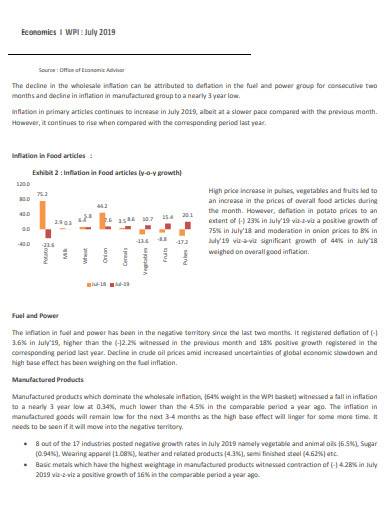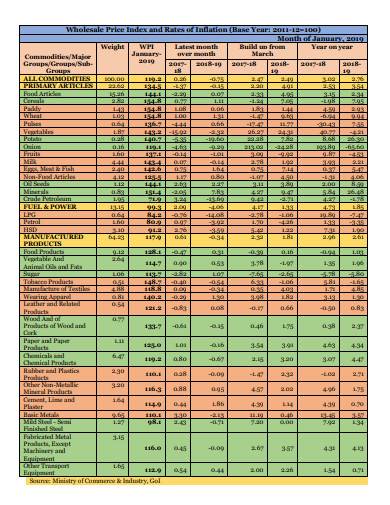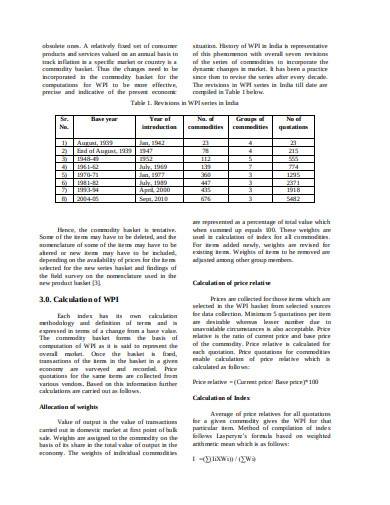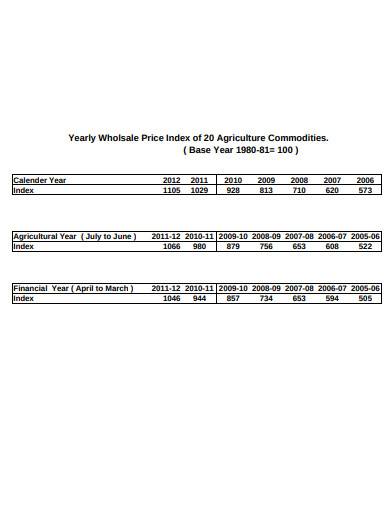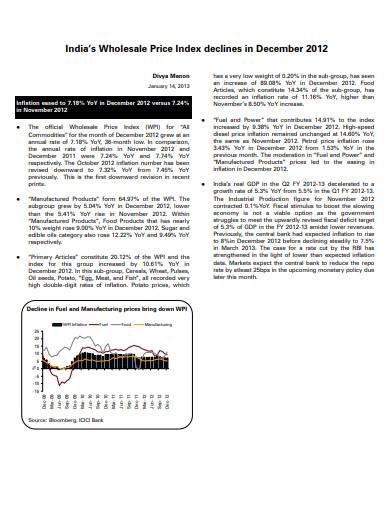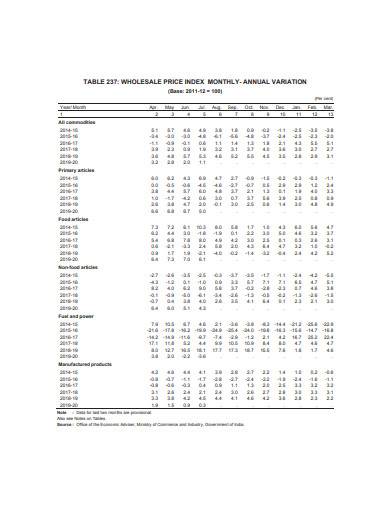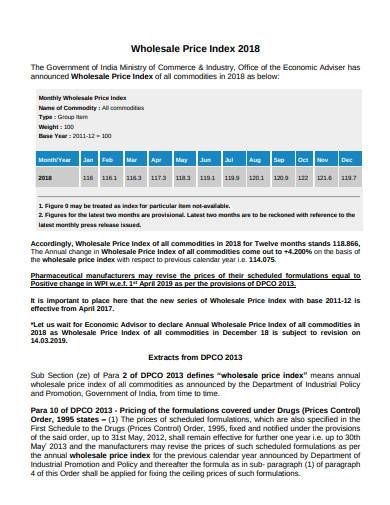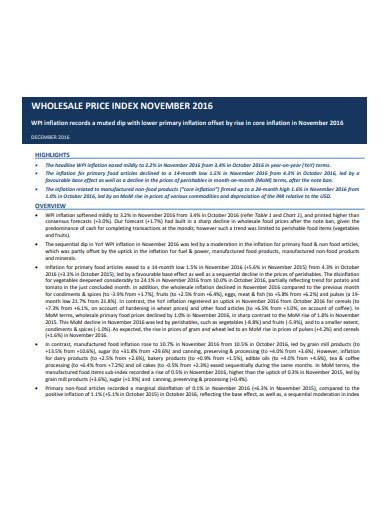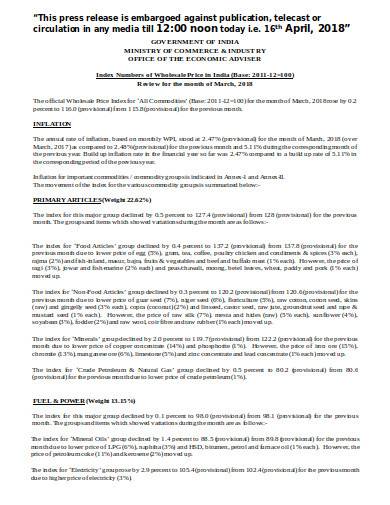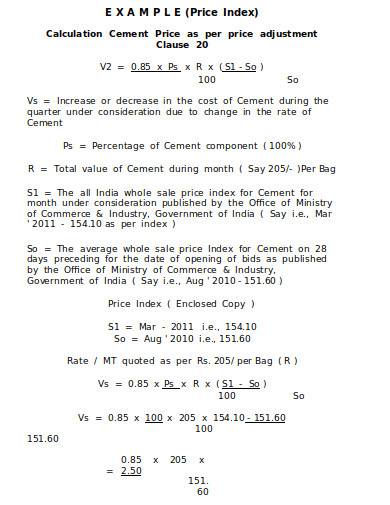They say change is the only thing that’s constant. How things were will always be different from how they are now. There is nothing you can do to stop this from happening. The only option you have left is to adapt. Even your body changes; a chubby kid can become a tall, lanky guy in just a few years. In economics, differences are very evident. The rise and fall of prices can determine a shift in the economy. Some try to create a cash flow forecast for the changes, but they don’t always get things right. One system used to track changes in product prices is the wholesale price index.
Understanding Wholesale Price Index
Studying the economy is vital for everyone. Even with a solid business plan, no one gets an exemption when it comes to inflation and deflation. That is why it is best to track the prices of goods in the market. One way to do that is by using a wholesale price index. This index measures the development of prices of products in wholesale. The use of this index is to study the inflation and deflation of prices sold between two entities before they reach the end consumer. This also points out the average cost of goods during a specific period. Economists utilize the wholesale price index to determine the percentage of changes of a specified year and the base year.
Key Points
Money is the primary determinant of the value of something. That is why it’s always best to track the price of goods to determine its value. To measure and conduct a cost analysis of products purchased in bulk, people use the wholesale price index. To quickly understand what the wholesale price index is, here are some key points to remember.
Measuring Stage
This index measures the prices of goods before they reach the end consumer. Retail businesses use another kind of index to track consumer prices. If the purchases and transactions happen between two merchandising parties, the wholesale price index still comes into play. Wholesale and retail prices differ, so their indices vary as well.
Ratios and Statistics
A report on the wholesale price index usually gets released every month. Other than the price lists, the index also shows the ratio of the changes in prices. In every wholesale index analysis report, the presentation of changes in purchasing rates is usually through statistics. This makes the rise and fall easier to visualize.
Country’s Inflation
Inflation is a serious problem. That is why you should always keep your eyes on the prices. To determine from an early stage if a country is going through inflation, economists study the wholesale price index. It’s not the only indicator, but it is one tool, like an inflation calculator, that economists use to examine the state of a country’s economy.
Products in the Index
The length of the price sheet in a wholesale price index isn’t all the same. This depends mainly on the country the index is from. In smaller countries, they would limit their products to two hundred items. But for highly urbanized countries like the United States, their price list could reach thousands of items.
Average
As times change, prices also vary. Other than knowing the difference in rates in the index, it is also important to know the average percentage of changes over the years. Looking at the price chart and statistics is helpful in creating a formula that calculates the average. The information needed for all of this is all in the wholesale price index.
WPI vs. CPI
There are many kinds of indices used to track the value of goods. The wholesale level isn’t the only one that people turn to if they want to find out the cost of assets. In retail, there is a thing called the consumer price index. Although they measure the changes in the value of certain products, they differ in processes and sources of data.
10+ Wholesale Price Index Samples in PDF | DOC
Money is such a taboo topic to discuss. But as awkward as it is, this conversation has to happen. And when it comes to the economy, the prices of goods is one factor that shouldn’t get ignored. One way to track the changes in product prices is through the wholesale price index. To fully understand what a wholesale price index is, here are 10+ wholesale price index samples you can check out.
1. Wholesale Price Index Sample
2. Wholesale Price Index and Rates Template
3. Wholesale Price Index in PDF
4. Wholesale Price Index Example
5. Wholesale Price Index Template
Yearly Wholesale Price Index of Agriculture
6. India’s Wholesale Price Index Sample
7. Monthly Wholesale Price Index Template
8. Formal Wholesale Price Index Sample
9. Basic Wholesale Price Index Template
10. Wholesale Price Index in DOC
11. General Wholesale Price Index Example
Differentiating WPI and CPI
It’s easy to believe that all price indices are the same. There are actually different types for different stages of merchandising. Since the market has different purchasing prices for wholesale and retail items, they also have different indices. Here are a few things to remember to help you differentiate a wholesale price index from a consumer price index.
1. Identify the Level of Selling
The first thing you need to do is see what merchandising stage serves as the basis of the transactions and prices. If the prices are for products sold in bulk, this is for wholesale. On the other hand, if the prices are for products sold to consumers, then it is for retail.
2. Find out What Gets Measured
It’s safe to assume that all indices only the prices of goods and nothing else. This concept is actually wrong. If the information shown in the data-sheet is only for products, then you are working with a wholesale price index. If the document contains information regarding products and services, then you are dealing with the consumer price index.
3. See How Inflation is Calculated
As mentioned before, a price index can help calculate the inflation of an economy. The way the difference between wholesale and retail is that inflation gets calculated during the early stages of a WPI while it gets calculated in the final parts of a CPI.
4. Determine the Base Year
Another way to differentiate a WPI from a CPI is the base year. In a wholesale price index, the base year follows the financial year. A consumer price index, on the other hand, follows the calendar year.
5. Figure Out Who Pays
Another noticeable difference between the two indices is buyers. In a wholesale price index, the prices are what retailers pay for the bulk items. This is different from the consumer price index because the prices are what the consumer pays for each item.
Prices of products vary for each economy. It would help if you studied the wholesale price index to understand more. If you can get knowledgeable about the index, you can understand how the economy works.
Related Posts
FREE 19+ Sales Receipt Templates
12+ Vehicle Invoice Templates
FREE 11+ Gym Invoice Samples
12+ Dry Cleaning Receipt Samples
FREE 8+ Bookstore Invoice Templates
9+ Sample Business Order Forms
FREE 13+ Real Estate Business Plan Templates
7+ Sample Vehicle Appraisal Forms
FREE 11+ Retail Invoice Samples
FREE 10+ Juice Bar Business
FREE 22+ Reseller Agreement Samples
8+ Sample Query Letter Templates
8+ Sample Vendor Contract Agreements
5+ Sample Business Valuation Reports
56+ Acceptance Letters

